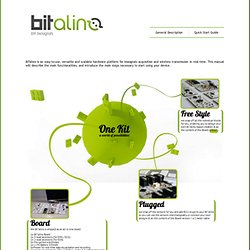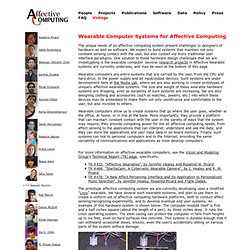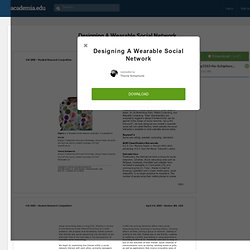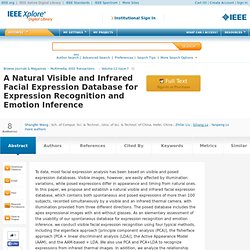

Www.wseas.us/e-library/conferences/2013/CambridgeUSA/ELIT/ELIT-27.pdf. Www.ietf.org/rfc/rfc4122.txt. Getting Started with Java and Bluetooth. You're a Java developer, and you've finally got yourself a Bluetooth device.

Maybe it's a cell phone, a PDA, or a USB dongle for your PC. Or perhaps you've heard a lot about Bluetooth, but you aren't sure what exactly you can do with it. In either case, you've had some exposure to Bluetooth, and now you're ready to start flexing your programming muscles with the technology. Great! The purpose of this article is to give you a good introduction to the Bluetooth protocol, including an overview of its protocol layers and profiles. What is Bluetooth? What exactly is Bluetooth? In order for Bluetooth devices to communicate properly, they all need to conform to the Bluetooth specification. The Bluetooth Protocol Stack The Bluetooth stack is the software or firmware component that has direct access to the Bluetooth device. Www1.appstate.edu/dept/physics/labs/sensors/voltage_differential.pdf.
b10n1c/reference schematics/BITalino EMG schematic.pdf. UpdatableClusterDissimilarity.java - java-statistical-analysis-tool - A Java library for Machine Learning. x86.cs.duke.edu/~tomasi/papers/birchfield/birchfieldPami98.pdf. ContentServer.asp-3.pdf. 1-s2.0-S0262885612000935-main-3.pdf. Project Sources. Raducanu_EIA.pdf. DSTO-TN-0403.pdf. United States - Virtual assistants, virtual agents, chat bots, conversational agents, chatterbots, chatbots: examples, companies, news,directory. 001-ICMLC2012-L0004.pdf.
HDF5 User's Guide. APIs. Kirby10Affective.pdf. Photoplethysmogram. Representative PPG taken from an ear pulse oximeter.

Variation in amplitude are from Respiratory Induced Variation. A photoplethysmogram (PPG) is an optically obtained plethysmogram, a volumetric measurement of an organ. A PPG is often obtained by using a pulse oximeter which illuminates the skin and measures changes in light absorption.[1] A conventional pulse oximeter monitors the perfusion of blood to the dermis and subcutaneous tissue of the skin. Diagram of the layers of human skin With each cardiac cycle the heart pumps blood to the periphery. The change in volume caused by the pressure pulse is detected by illuminating the skin with the light from a light-emitting diode (LED) and then measuring the amount of light either transmitted or reflected to a photodiode. Sites for measuring PPG[edit] While pulse oximeters are a commonly used medical device the PPG derived from them is rarely displayed, and is nominally only processed to determine heart rate.
Uses[edit] See also[edit] PyAPI/pyAPI.pdf. Nonlinear SVMs. Next: Experimental results Up: Extensions to the SVM Previous: Multiclass SVMs Contents Index With what we have presented so far, data sets that are linearly separable (perhaps with a few exceptions or some noise) are well-handled.

But what are we going to do if the data set just doesn't allow classification by a linear classifier? OSBIOSIGNALS_66_CR.pdf. Cognitiveapproaches / Cognitive Information Processing Theory. M.C.

Escher In a nutshell, this theory, which is more of a composite of multiple theoretical perspectives, seeks to explain human learning as the development of networked memory stuctures. The human brain is seen as a neural computer of sorts as opposed to the "black box" of Behaviourism. Declarative, procedural and conditional knowledge is all stored in the brain. Problem solving depends on two key factors: information processing capability and stored information. Information Management The inputs provided to the system arrive via the five senses – touch, smell, hearing, sight and taste – and are then processed. Two Way Flow of Information Recognizing that the world around us is in constant flux, our brains are always processing information received from the senses and comparing new information received with what is known given a particular environment.
The Governing In-built Genetic Structures on our Development Models of Information Processing I) The Dual Memory or Two Store Model Storage. Downloads/bitalino_manual/manual.html. BITalino is an easy-to-use, versatile and scalable hardware platform for biosignals acquisition and wireless transmission in real-time.

This manual will describe the main functionalities, and introduce the main steps necessary to start using your device. General Description. Hanson Robotics Inc Home - Hanson Robotics Inc. Media Lab: Affective Computing Group. The unique needs of an affective computing system present challenges to designers of hardware as well as software.

We expect to build systems that maintain not only constant sensing contact with the user, but also contact via more traditional user interface paradigms. One solution to these hardware design challenges that we are investigating is the wearable computer. Several research projects in Affective Wearable systems are currently underway, and may be seen at the bottom of this page. Wearable computers are entire systems that are carried by the user, from the CPU and hard drive, to the power supply and all input/output devices. Such systems are under development here at the Media Lab, where we are also working to create prototypes of uniquely affective wearable systems. Wearable computers allow us to create systems that go where the user goes, whether at the office, at home, or in line at the bank.
Output devices Input devices Traditional hardware alternatives. Singletary,_Starner_-_Symbiotic_Interfaces_for_Wearable_Face_Recognition.pdf. Designing A Wearable Social Network. Desig Copyrigh FigureYin He School102 Avyha43 Thecla School102 Avthecla@ t is held by the auth, April 4–9, 2009, Bo-1-60558-247-4/09/

Master_hayden_2014jun_wearableassistedsocialinteractionasassistivetechnologyfortheblind.pdf. Kanis05iBandCHI.pdf. OpenSignalsUserManual-BITalino.pdf. Affectiva's Emotion Recognition Tech: When Machines Know What You're Feeling. Smile: Your computer is watching.

Affectiva, a three-year-old startup that grew out of MIT’s Media Lab, is teaching machines to understand what you feel. Affectiva has developed a way for computers to recognize human emotions based on facial cues or physiological responses, and then use that emotion-recognition technology to help brands improve their advertising and marketing messages. For example, Affectiva might train a webcam on users while they watch ads, tracking their smirks, smiles, frowns and furrows to measure their levels of surprise, amusement or confusion throughout a commercial and compare them to other viewers across different demographics. Affectiva also makes a wearable biosensor that can monitor the user's emotional state via her skin. For HuffPost Tech's "Life as... " series, Affectiva’s co-founder and chief technology officer Rana El Kaliouby offered a glimpse at what happens when machines know we're amused and the future of computers with a sense for feelings.
Marrin_Thesis.pdf. A Natural Visible and Infrared Facial Expression Database for Expression Recognition and Emotion Inf... To date, most facial expression analysis has been based on visible and posed expression databases.

Visible images, however, are easily affected by illumination variations, while posed expressions differ in appearance and timing from natural ones. In this paper, we propose and establish a natural visible and infrared facial expression database, which contains both spontaneous and posed expressions of more than 100 subjects, recorded simultaneously by a visible and an infrared thermal camera, with illumination provided from three different directions. The posed database includes the apex expressional images with and without glasses. Mm-lisech-040601.pdf. MIT Media Lab: Affective Computing Group. Hudlicka Chapter 1.